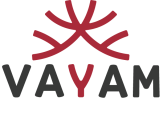
In the knowledge management era of today, the key to an economy’s growth and development is the development of its knowledge assets. If India wants to be at the forefront of this knowledge management era, it needs to reach its goal of educating everyone as soon as possible.
Article 45 of the Directive Principles of State Policy of the Indian Constitution says that all children must go to school until they are 14 years old and go to school for free. The government has also made plans to make sure everyone gets an education. Free and mandatory elementary education is a top priority, and special attention is paid to children with special needs, vocational training, women’s education, and education for those who are socially disadvantaged.
Unfortunately, the results have not lived up to expectations. Still, efforts are being made through a three-part plan that focuses on all parts of elementary education, secondary education, and adult education.
India’s education system faces several key challenges, each with potential solutions. Here are five major challenges and their corresponding solutions:
- Access to Quality Education is a challenge for many regions, particularly rural areas, resulting in educational inequality. It is thus imperative to increase funds for underprivileged schools to upgrade buildings and resources. Also, using technology to provide online courses and materials, making education accessible from anywhere.
2. The existing curriculum frequently fails to line with industry requirements, leaving students unprepared for the employment market. It is important to emphasize curriculum updates and project-based learning. One must collaborate with industry to modernize practical skills and vocational training courses and encourage experiential learning through projects and internships relevant to real-world applications.
3. Challenge of training quality: Many teachers do not receive proper training, which has an influence on educational quality. One of the solutions could be to implement continuing professional development programs for teachers to enhance their abilities and teaching approaches. Additionally, it is important to recognize outstanding instructors to promote effective teaching.
4. A large number of students drop out before finishing their education, especially at the higher levels. Thus, counseling and support programs should address social and economic reasons leading to dropouts. Further, offer flexible learning options, such as evening sessions or skill-based training, to meet varied needs.
5. Socioeconomic differences lead to unequal access to educational opportunities. Thus, enhancing scholarship and financial aid programs for impoverished students is essential to lower financial barriers. Moreover, engaging local communities in education programs is important to promote awareness and support for underrepresented groups.
Addressing these challenges requires a multifaceted approach involving government, private sector, and community engagement.
